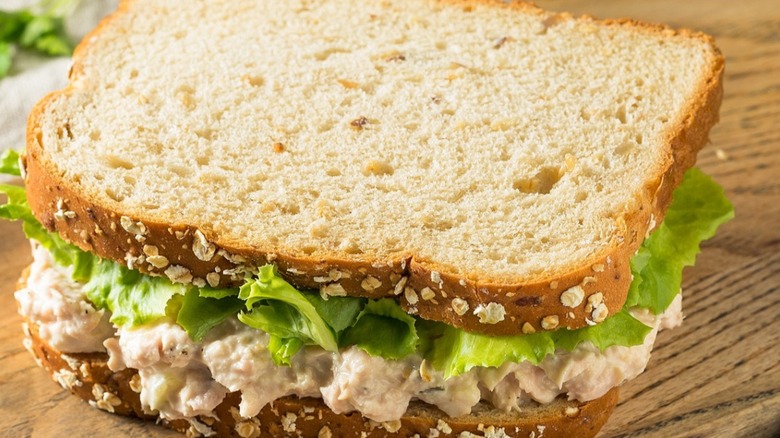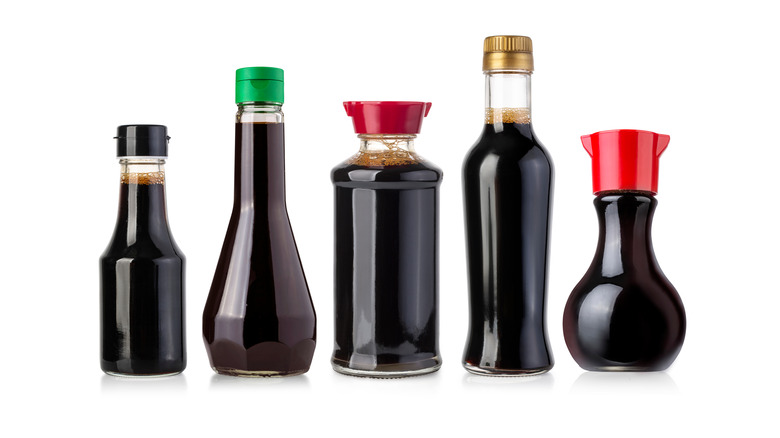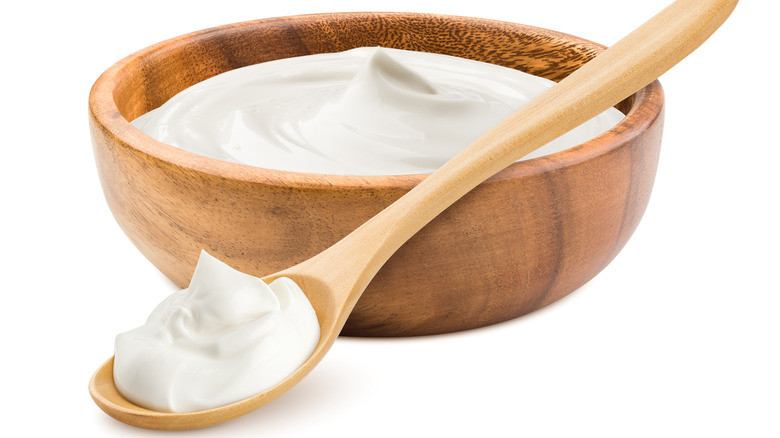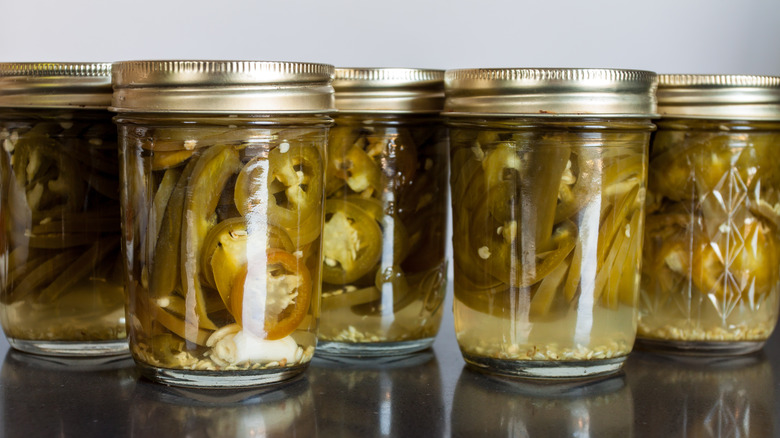The Secret Ingredient That Will Change Your Tuna Salad Forever
When you think of tuna, you might think of those little Starkist or Bumble Bee tuna cans you pop open and mix into a mayo-based salad. Basic tuna salad consists of canned tuna, mayo, a little celery, some lemon juice, and maybe a bit of crunchy onion, if you want to spice things up.
Tuna salad is a beloved American dish; in fact, Americans consume a whopping amount of canned tuna each year. It might sound a little fishy, but according to the National Fisheries Institute, Americans eat one billion pounds of canned and pouched tuna on an annual basis, and 52% of Americans enjoy tuna salad sandwiches.
But if those traditional ingredients don't bring your tuna salad to the level of tastiness your taste buds desire, we have the secret ingredient that will change all of that. And the best part? This flavor-enhancing condiment is probably already in your refrigerator.
Adding soy sauce to your tuna salad is the game-changer you've been searching for
To add a splash of flavor to your tuna salad, you should consider adding soy sauce to the recipe, suggests the Salted Spoonful. According to the Cooking Channel, soy sauce has been around since 300 C.E. and is an essential condiment for eating sushi, ramen, lo mein, and plenty of other Asian recipes. Soy sauce adds an umami flavor to whatever recipes you want to make pop. It's that rich, savory depth of flavor, coupled with a subtle sweetness, that ensures the addition of soy sauce will knock the socks off your tuna salad.
However, as Salted Spoonful explains, adding the soy sauce is only part of the secret equation here. The other part is to allow your tuna salad to take a nice bath in the sauce for anywhere between three hours to overnight. The marinating allows the fermented flavors of the brown juice to work its magical powers. But you might be wondering — is it really that yummy?
Well, it must be — sandwich shop Jimmy John's uses soy sauce in the recipe for its tuna salad sandwich. And there are plenty of copycat recipes out there that get pretty close to the delicious taste of the Jimmy John's version. So, just how much soy sauce should you add to your tuna salad? Recipes vary, but Food.com suggests using 1/4 cup of soy sauce for every six five-ounce cans of tuna in your recipe.
Yes, it's okay to skip the mayo
If you love tuna but aren't a mayo fan, hope isn't lost. You can replace the mayo in tuna salad with plain Greek yogurt.
The culinary writer notes that Greek yogurt will add creaminess to your tuna salad and boost the dish's protein content. Menko suggests layering in Dijon mustard and avocado, as well as crunchy elements such as cucumber and bell pepper.
Bumble Bee Tuna also has a take on the tuna-yogurt combo; the company uses the ingredients to create a Vietnamese-style dish. The tuna maker recommends using Sriracha, Greek yogurt, and soy sauce to create the dressing for a banh mi sandwich that will make you want to sink your choppers into it over and over again. And to give this tuna salad sandwich a little kick, the company suggests adding sliced jalapeños, too.
Consider adding jalapeño juice to your tuna salad, too
Speaking of the spicy jalapeño, Men's Health reveals that the juice from these hot peppers, which are often found in Mexican dishes, can also improve the taste of tuna salad. The magazine shares that the juice from jalapeños will make mayo or Greek yogurt even creamier. And that "bite and burn" feeling the peppers create on your tongue adds a kick that spice lovers are sure to enjoy.
This suggestion gets to the heart of the "waste not, want not" adage, too; instead of dumping the juice from a jar of jalapeños into the sink, you can use it in your recipes. (If you're really on an anti-waste kick, you can also use jalapeño juice to make spicy green juice or even spicy margaritas.)
Barefeet in the Kitchen also offers a riff on tuna salad that uses both jalapeño and pasta. The blog suggests adding two tablespoons of jalapeño juice to tuna salad. However, the outlet also notes that you can use the taste-and-go method, starting with a bit less jalapeño juice and adding more if your taste buds can handle the heat.



